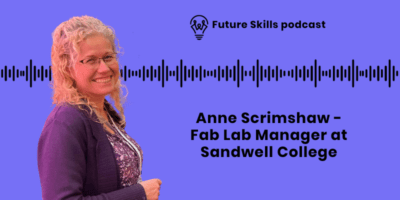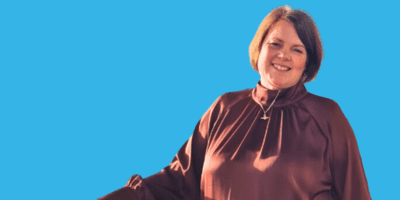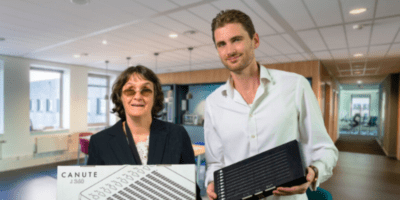Lucy Standing is the founder of Brave Starts CIC, a social enterprise dedicated to helping individuals transition into new careers. With a background in occupational psychology, she uses her expertise to provide practical and psychological support to those facing career changes. Lucy’s innovative approach and commitment to social change have made Brave Starts CIC a leading force in career transition support.
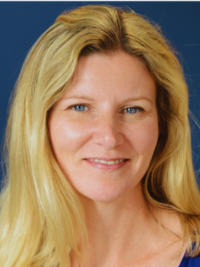
“Everyone’s looking to each other and until some people start making the first move nothing’s going to change and nothing’s going to get done. This is a real leadership opportunity. It’s not a followership opportunity. Employers — be experimental, be brave.”
Educational background and career to date
I’ve always been interested in psychology and how to utilise that within a business and work setting. I did my degree and then I went down the master’s route, but following an occupational psychology path as I wasn’t so interested in clinical or criminal areas. I love using psychology in the workplace.
I started off in-house as an in-house (graduate) recruiter for what was at the time called Chase Manhattan Bank, which is now J.P. Morgan. I then became a global head of recruitment for a strategy consulting firm. I left the in-house world to go and work as a consultant in a specialist boutique consultancy, helping to design selection and development processes for a whole wide range of organisations.
Then, for the past 15 years, I’ve focused in the non-profit space. I used to be vice chair of the professional body in the UK for business psychology, the Association for Business Psychology, and then more recently, since about 2020, I’ve been building up Brave Starts, a non-profit supporting people’s career development.
As we get older the sort of skills that we need change over time, but our values also change too, and I spotted a big gap around the fact that there’s a lot of career guidance and career development provision for young people but surprisingly little for people at the midlife stage of their life.
So, we help people think about what they enjoy, where they get their energy from, and how they can utilise that for the next 20 or 30 years of their life because it’s firmly believed that people shouldn’t entirely retire.
Brave Starts
The work we’re doing at Brave Starts is constantly evolving. At the moment, our community is a business-to-consumer (B2C) community. From a day-to-day perspective, we run lots of workshops to equip people with the skills and insight they need to figure out the next few years of their life.
We run these workshops as a series, so when people join as members, we help them to work out the skills they’re going to need going forward. In the first session, we manage their expectations and raise their insight into what it is they’re going to have to self-develop in order to navigate the future world of work.
Then, in the second session, we have a bit of a self-analysis, looking at what is it that gives them energy. What drives them? What are their motivations now? Because things do change over the course of time, so what drives you in your twenties is not what drives you in your fifties.
Then our third workshop is really about understanding the psychology of aging and giving people the skills to self-advocate around how important their age is and how valuable the skills are that they have to offer in the workplace. They might be changing roles, or returning to the workplace in an employed role, or they might be setting up their own business.
The fourth session is about how they target their strategy because recruitment for this demographic is well and truly broken, so they are going to have to navigate and find their own way into the world of work with very little support. How we can help is to give them validation around that, but also some of the real practical guidance and skills.
So, we’re running lots of workshops, lots of small groups. In addition to that, we’re also bringing the community other workshops that are tangentially related. So, we have employers that come in and talk to our community about jobs that they are recruiting for.
I will also go out to the academic community if, for example, there’s an interesting research paper about people who are overqualified, or examining cognitive development and the different skills people have at the age of 50 and over.
I’ll usually interact with people through Zoom interviews, but we’ll also create content we can then share with the community so that they are accessing evidence-based content in an accessible way.
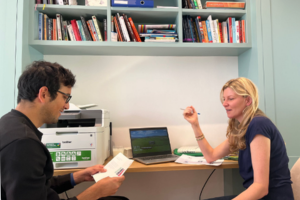
The final thing we’re doing is support around interview skills and all of those other sorts of areas where people might want to have a bit of a refresh in the same way that you might sign up for a LinkedIn masterclass.
Working alongside corporates
Going forward, I can see more of a space for us in the corporate sector, because companies are increasingly waking up to the idea that if they want to increase the career mobility of people within their organisation, then they have to give them some of the skills to be able to do that, because a lot of time you can’t rely on the structure of an organisation to help them.
Most organisations still have an internal structure that means you start as a graduate and work your way up but there aren’t really mechanisms that enable people to, for example, go and shadow different areas in the business, or go and do work experience in different parts of the business in order to plan what is the next five, ten years when they get bored of a certain role.
If they want less responsibility, how do they navigate that route downwards? Do they want to move to a different part of the organisation, but potentially end up on less money with less responsibility? There’s a quid pro quo about what they’re giving up, but also what they’re potentially gaining in terms of the opportunity to learn new things. A lot of that helps meet the organisation’s need to retain staff too.
We want to have as much impact as possible so part of the goal of being a non-profit is that we prize impact and purpose over profit. And I won’t let companies or organisations do things that I know to be unproductive.
There are a lot of organisations setting themselves up in this area but I’d suggest that very few of them are driven to really understand the issues and very few of them are engaging with the community these issues affect.
I’m sceptical when I see lots of people offering things like unconscious bias training because actually, the evidence around things like unconscious bias training is that it absolutely doesn’t work. If anything, it creates animosity. My values around this sort of stuff are — let’s really investigate what is happening and how can we have the most impact on what organisations are able and willing to spend.
Acquired wisdom
I think there is enormous potential for people aged 50 and over to play more of a role in the workforce. We’ve not even really begun to scrape the surface of what that might start to look like.
As people get older their values change. So, for example, the sort of drivers you have in your 20s are things like hedonism, stimulation, achievement, and power. Those sorts of drivers tend to be things that tend to be categorised as self-enhancing. As people get older and acquire certain things, like reputation and build up their status, they have a family and put a roof over their heads, by the time they get to their 50s or 60s, more of the things they value tend to be self-transcending.
So, because whatever’s been put in place that has enabled you to achieve all of these things, you tend to think: “I want to now make that pathway a bit easier and clearer for other people.” So, the sorts of drivers you see at that stage in life are more around things like caring about peace and harmony, opportunities to learn, mentoring, advising, guiding, tradition, heritage, preservation, as well as, security and looking after family.
When you examine the differences between the younger and older life stages (and we have a workforce that’s made up of both of them) — the people who are striving and the people who want to help them strive. I don’t think one is better than another, but I certainly see that in a workforce that’s made up of both of them, the younger people might inclined to be drawn into playing some political games, but then with the older people thinking: “Politics is actually a little bit tedious.”
The way to go about it properly is by having a combination where values are just one part of the pie. You’ve also got the fact that as you get older, your resilience levels tend to increase. The tragedies that youth manages to escape don’t tend to be the sort of experiences that older people can escape.
So, by the time you’ve got to your 50s, you’ve seen people die. You’ve experienced things like real tragedy or real personal challenges. Take serious illnesses like cancer, for example. Many more people are going to have cancer in their 50s than they would have had in their 20s. Other things have happened — you’ve been fired, you’ve been performance managed, you’ve possibly been through a divorce, you’ve had your heart broken.
The sort of understanding that you can survive and get through those sorts of things means that actually the perspective you’re able to bring, around conflicts and challenge and things like that, means there’s more of an ability to put these sorts of things in perspective. And I think that’s incredibly valuable for growing organisations that face challenges, as indeed most organisations do.
The other main thing about ageing is the assumption is commonly made that as people get older they can’t necessarily learn new things and that their cognitive intelligence or their cognitive processing speed declines. There is some truth to that, but the relationship with job performance actually shows that the sort of intelligence that really predicts things like growth, revenue, and profit (the sorts of things that tend to count most!) are actually more associated with something that’s called crystallised intelligence.
Missed opportunities
Online psychometric tests assessing numerical reasoning, verbal reasoning and those sorts of things, tend to be assessing the form of intelligence that has less of a relationship with job performance. Whereas the crystallised stuff, like knowing how to handle a difficult client or how to manage a client so that you’re more likely to get repeat business, knowing how to respond and empathise with a patient that’s really struggling, knowing who was prime minister back in 1985, understanding how markets react when shit hits the fan, all that experience and intelligence is the stuff we tend to acquire with age. So, there’s an awful lot organisations can learn from the life experiences of older people.

If you’ve got an audience that is more resilient to challenges that might happen, cares more about the collective of the company and the goals that people might be trying to achieve, potentially at the expense of their own personal ones, and if you’ve got people who are as intelligent, if not more so, in terms of the things that tend to count, then why isn’t that the audience that more organisations would be strategically thinking about targeting?
That’s one thing if you want to have people working 24/7 and doing crazy amounts of work, which is what drives a lot of organisations. So, if we look at the NHS, for example, charity organisations, legal firms and consultancy firms, many of the things they need that will predict whether or not they’ll be successful would probably align more closely with a slightly older candidate pool.
So, why don’t we have a more strategic focus thinking how do we make the most of this community or how do we make the most out of the skills that exist in this portion or this demographic of the population? It seems to me to be a massive missed opportunity.
Gender differences
When it comes to the issue of gender, anecdotally I would say that 68% of our membership are female, and 32% are men, which says something in itself, right? What is it about the career-development conversation that engages women more than it does men? It’s something I don’t fully understand myself and it’s something I’d like to explore and do a little bit more research on.
On a practical level, I’ve had men respond to me privately — email me saying things like: “I feel very uncomfortable talking in groups because maybe I want to share or say things, and I’m worried I’ll get attacked by the women on the call.” When I have people book one-on-one sessions, they are much more likely to be men than they are to be women, so there is something about the group context that women feel more comfortable with.
When I have groups of women, they’re all very supportive, and very collaborative. They enjoy the time together. I see some distress and I see some anxiety for sure, but when I have more of the one-on-one conversations with the men, I would say that the distress I’m observing is much more considerable. So, there’s a lot more visible anxiety, there’s a lot more visible emotions, like crying and shaking, sitting with head in hands, real pressure.
I think it’s changing for younger people coming through, but I think that the 50 plus, the 60 plus men feel a real pressure in the sense of being the breadwinner. I think they feel less support at home, so when you ask a lot of them about what sort of social support they have, a lot of that feels undermined because they’re saying that the reality is they might have a partner who’s saying: “Do what you’d like but keep bringing in the money,” which ultimately means they really can’t do what they like.
This means them having to stick to doing jobs that they hate, being really worried about making changes that might sacrifice pensions or being able to pay for school fees, or goodness knows what. I think a lot of that burden feels more heavily felt by the men.
A leadership opportunity, not a followership opportunity
The main thing for employers is just to understand that the blueprint for this is anything but clear. If they’re going to go and look at their academic books or research for what they should do to manage an ageing population, the evidence around what are the different levers and how will they work isn’t clear.
There are a lot of companies experimenting with whether they should off midlife MOTs. Should they offer enhanced grandparenting? Should they offer enhanced medical care? Should they offer more flexible working? There’s a whole range of different ideas that people are exploring but which are the ones that will demonstrably have the greatest impact? Presumably, that’s going to be different for different organisations.
So, if the blueprint isn’t clear, then you have to experiment. The main thing organisations can do is to step up and be a bit braver about this because the question I get asked most of the time is: “What’s everyone else doing?” To which I’m very clearly saying: “Don’t look for what everyone else is doing, because everyone else is looking towards you.”
Everyone’s looking to each other and until some people start making the first move nothing’s going to change and nothing’s going to get done. This is a real leadership opportunity. It’s not a followership opportunity. Employers — be experimental, be brave. Come and talk to someone like me for example.
I’m not going to steer people down a blind alley. I’ll give them very clear guidance as to the sorts of things that are possible and, hopefully, I’ll be able to link them up with places that might be able to help with some real impact and evaluation work in order to demonstrate what actually does work. I would like people to see that this is a real partnership and we all have to contribute. It takes bravery and it takes leadership.
An age-old problem
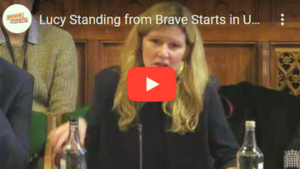
CIPD research from 2022 surveyed 2009 organisations on their diversity and inclusion work and we’re still looking at 82% of organisations that have not included anything to do with age diversity in their plans, with the issue not even considered.
Then if you ask them about how many of them are going to start looking at age over the next five years, we’re talking 13%, and even then, they might start looking at it. And that’s just looking. That’s not actively putting things in place. And if you ask them if they’ve got any budget for this, then they say no, they don’t. So, do we want to do this? Is it just a nice thing to do? What’s the business case? Are other areas of diversity more important?
Carrot versus stick
If we want change to happen, the government has to step up here because we can clearly see that left to their own devices, employers are not doing anything on this, or at least the stuff they’re doing on this is very experimental, baby steps and even then, in an unbelievably small number of organisations. So, to move more quickly on this, the government is going to have to pull some levers. They’ve got two options.
Option one is you use stick, which is to force companies to start doing things like revealing demographic data on age and how many people get promoted at different ages, and how many people get recruited at different ages, and shine a spotlight on that. Personally, that is not my favoured approach. I don’t think we need a tick-box approach — I think that just becomes bureaucratic and it becomes an exercise of we have to do something, not we want to.
The carrot option is to somehow make the demographic of people over the age of 50, more attractive to employers, so they want to employ or want to train and develop this group.
I think on something like that, there might be a financial solution around making the national insurance that organisations have to pay for people over the age of 50 slightly cheaper because when something becomes slightly cheaper, organisations are going to say: “Right, how do we reduce our costs? Hmm, the 50-plus pool is looking a little bit more financially attractive. Why don’t we try and recruit them? Let’s stick out an advert to this group of people. Oh, look. Nobody’s applied. Why is that? Let’s run some focus groups. Let’s ask some questions. Now we really should change some of the sorts of things that we’re doing.”
So, I think sharpening the focus on this will be enhanced if there’s some financial incentive around it. My gut instinct is making them a cheaper group of people to employ. The automatic response to this is usually something like: “But we can’t do that because then younger people get left behind.” I think what they’re forgetting though is that younger people eventually get old.
When you do something to help the people who are over the age of 50 who genuinely have these ages and barriers, actually, over the longer term, it helps people who are younger to make sure that we’re ironing things out for them, so that when they do experience older age, and hopefully they have a smoother ride.
Apprenticeships
When it comes to things like apprenticeships, a lot of the time the way they’re branded and packaged up automatically implies a younger audience. Consider the construction sector, for example. If you look at a lot of the largest construction companies’ websites, the language used to promote apprenticeship programmes is about how ‘cool’ they are. There’s information for parents and teachers, information about summer internships and summer placements. The terminology they use makes it very clear the audience they’re targeting is a really young one.
If you asked many people in their 50s or 60s how they’d feel about joining a cohort of people like, the response isn’t going to be positive when they’re effectively being excluded.
How the Womanthology community can support
I’d invite the Womanthology community to help us by shouting about the work that we’re doing. We don’t have huge marketing budgets to help us get the messages out there that there’s a supportive community and a place to get validation about some of the anxieties that people might be experiencing in the jobs market, certainly as they get a bit older. It’s also about letting people know there’s a place to get some real practical help, insight, support, encouragement and collaboration.
Knowing all of that is genuinely valuable. The people we have as members and the surveys that we do tell us that we make a difference, and people enjoy engaging with us. Getting involved with what we’re doing and supporting is helping that wider agenda. At some point, it’d be quite nice to pay a salary to somebody, but at the moment, we’ve got enough volunteers who are passionate about this topic but it feels like an agenda we need more people to engage with, and so supporting the work really good way of saying that.
The other thing people can do is to call out organisations that might be struggling. So, if there’s an organisation saying: “We’re having real problems recruiting people” or “we’ve got a problem with our brand image” or that they’ve got a problem with any of these sorts of things, then you might suggest that they could have a conversation with us as we may be able to help them.
Creating possibility and driving insight
We have just done a piece of research looking at how we want to have more influence at government level for the reasons I’ve already described. We’ve prepared a report about the reasons organisations struggle to engage on this topic.

Now, and for the next six months, we’re running workshops on this research. We’re asking questions about the things organisations could do more to engage with in order to recruit and retain the 50-plus demographic. We’re also asking about what government support they would want to enable them to be a bit more experimental about this stuff.
We’re running these workshops in England, Wales, Scotland, so right across the UK, with different sized organisations, demographics, and so on, because our goal is to then present to Labour and Conservative ministers next year as they’re developing their manifestos for a general election. We want to let them know what people in the community are already saying and what they need help and support with, so when they’re drafting their manifestos, they can take into account the views from 250 plus organisations representing all sizes, shapes, and sectors.
So that’ll be interesting, and it might not go anywhere, but I think at the end of the day even having the conversation raises awareness, formed from running workshops where people are discussing an idea creates possibility and drives insight. Having a group of people in a room all enthused and engaged on a topic drives the sense of possibility.
Main image credit: Image by Freepik (adapted)


